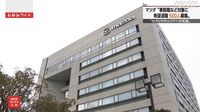Mazda Motor Corporation has announced a significant initiative aimed at its workforce amidst a shifting economic landscape. On April 22, 2025, the company revealed plans to solicit voluntary retirements from 500 employees, a move that reflects the challenges facing the automotive industry today.
Eligible candidates for this program are regular employees aged between 50 and 61 who have worked for the company for at least five years. Notably, the program targets those in indirect departments, excluding positions directly involved in automobile manufacturing at Mazda’s factories. The company aims to implement this initiative in up to four phases, starting in June 2025 and running through December 2026.
Mazda’s decision comes at a time when the company is grappling with rising costs associated with electric vehicle (EV) development and the uncertainties stemming from U.S. tariffs. These tariffs have raised concerns about the potential impact on Mazda's business performance, particularly since a substantial portion of its sales relies on the U.S. market.
In an online briefing on the same day, Miyako Takuchi, an executive officer at Mazda, emphasized the importance of supporting employees' independent career development. She stated, "The automobile industry is extremely opaque due to responses to electrification and trade policies. Independence of each employee is required." This initiative, called the "Second Career Support System," is designed to help employees leverage their experiences and skills gained at Mazda to pursue opportunities outside the company.
Takuchi clarified that the introduction of this voluntary retirement program is not directly tied to the recent tariff measures imposed by the U.S. government. Rather, the company has been contemplating this move for some time, even before the tariffs were enacted. "This is not a system that is being introduced based on the current situation," she remarked, indicating that the decision was part of a broader strategy to adapt to changing market conditions.
Eligible employees will receive increased retirement benefits and support for re-employment as part of the program. The company aims to provide a safety net for those opting to retire early, ensuring they have the resources to transition into new career paths. Takuchi noted that the decision to implement such a program reflects Mazda's commitment to its employees, even in challenging times.
Historically, Mazda has experience with voluntary retirement programs. For instance, in 2001, when the company was under Ford's management, it initiated an early retirement program that attracted over 2,200 applicants for 1,800 positions. This initiative resulted in a significant reduction in fixed costs, amounting to approximately 19 billion yen due to decreased labor expenses. The success of that program may provide a framework for the current initiative.
As the automotive industry faces an ongoing transformation driven by electrification and evolving consumer preferences, companies like Mazda are compelled to rethink their workforce strategies. The rising costs of developing new technologies, particularly in the EV sector, have added pressure on manufacturers to streamline operations and reduce expenses.
In light of these challenges, Mazda's voluntary retirement program is seen as a proactive measure to manage workforce costs while simultaneously providing employees with options for their future. By encouraging voluntary retirements, the company hopes to create a more flexible workforce that can adapt to the changing market landscape.
Moreover, the move aligns with broader trends in the automotive industry, where many companies are re-evaluating their workforce needs in response to technological advancements and economic pressures. With the ongoing shift towards sustainable transportation and the need for significant investment in new technologies, manufacturers are under increasing pressure to balance innovation with cost management.
As Mazda navigates these complexities, the company remains focused on its long-term goals while ensuring that its employees are supported throughout this transition. The Second Career Support System not only aims to assist those looking to retire but also reflects a commitment to fostering a culture of adaptability and resilience within the organization.
As the automotive landscape continues to evolve, initiatives like Mazda's voluntary retirement program may become more common as companies seek to align their workforce with future demands. By investing in employee development and providing pathways for career transitions, manufacturers can better position themselves for success in an increasingly competitive market.
In conclusion, Mazda's announcement to solicit voluntary retirements for 500 employees is a strategic response to the economic uncertainties facing the automotive industry. By offering support and increased retirement benefits, the company aims to assist employees in navigating their career paths while also managing operational costs in a challenging environment.




